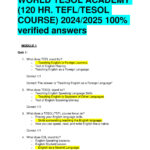I’ve always been one of those people who lights up at the sound of a new language. The way words twist and turn, the nuances of different cultures – it all just fascinates me. For years, I devoured language apps, watched foreign films, and even tried to hold conversations with anyone who’d humor my broken attempts. But after mastering a few languages to a conversational level, I found myself asking, "What’s next? What can I really do with this?"
Then, one day, a whisper turned into a clear voice: "Interpretation."
Honestly, the idea felt a bit daunting. I pictured serious people in booths at the UN, speaking flawlessly into microphones. Could I ever do that? The thought was exciting, terrifying, and utterly captivating. So, with a mix of curiosity and a healthy dose of nerves, I decided to take the plunge and enroll in an Interpretation Course. Little did I know, it would be one of the most transformative decisions of my life.
What Exactly Is an Interpretation Course? (And Why It’s Not Just About Speaking Two Languages)
Now, before we dive deeper into my adventures, let’s clear something up. When most people hear "translation," they think of written text. Interpretation, however, is all about the spoken word, in real-time. It’s about taking what someone says in one language and conveying its full meaning, intent, and tone into another, on the fly.
My interpreter training wasn’t just about polishing my vocabulary or grammar. Oh no, it was a deep dive into active listening, lightning-fast critical thinking, a memory workout like no other, and a crash course in cultural sensitivity and professional ethics. It’s like being a bridge, making sure that two people, or even entire groups, can genuinely understand each other, not just hear each other’s words.
Stepping into the Classroom: My First Impressions
My first day was a cocktail of nerves and excitement. I walked into a room full of people from all walks of life – some already bilingual professionals, others, like me, just eager language lovers. Our instructor, a seasoned interpreter with years of experience in various settings, greeted us with a warm smile that instantly put me at ease.
Our classroom wasn’t just a room; it was a vibrant lab. We had headphones, mock microphones, and a whole lot of energy. The initial exercises felt clumsy, like trying to juggle with one hand tied behind my back. I’d miss a key phrase, stumble over a word, or forget an entire chunk of what was just said. It was humbling, to say the least. But that’s the beauty of a good interpretation course – it provides a safe space to make mistakes, learn from them, and grow.
The Heart of the Matter: What We Actually Learned
The curriculum of the interpretation course was incredibly comprehensive, pushing me in ways I never expected. Here are some of the key areas we explored:
-
Active Listening: The Unsung Hero
Sounds simple, right? It’s anything but. We learned to filter out noise, identify main ideas, pay attention to intonation, and even pick up on unspoken cues. It’s about being fully present, absorbing every single piece of information, and understanding the speaker’s emotional state. This skill alone has been invaluable, not just in interpretation but in my everyday life. -
Memory Enhancement & Note-Taking Techniques
This was where my brain really started to hum. In consecutive interpretation (where the speaker talks, pauses, and then you interpret), you can’t rely on writing down every word. We were taught specialized note-taking methods – symbols, abbreviations, and mental mapping – that allowed us to capture the essence of a message without getting bogged down in detail. It was like learning a secret code! -
Modes of Interpretation: From Consecutive to Simultaneous
The course covered the different types of interpretation, each with its own unique demands:- Consecutive Interpretation: As I mentioned, this involves the speaker pausing for you to interpret. It felt like a dance, a rhythm of listening, remembering, and then speaking.
- Simultaneous Interpretation: This is the high-wire act – interpreting while the speaker is still talking, usually with specialized equipment in a booth. It was like trying to juggle several balls while riding a unicycle. Incredibly challenging, but the thrill when you get it right is immense!
- Sight Translation: Reading a document in one language and interpreting it aloud into another. This honed my ability to quickly grasp written meaning and render it orally.
-
Ethics and Professionalism
This part surprised me the most. We didn’t just learn how to interpret; we learned how to be an interpreter. Impartiality, confidentiality, accuracy, and cultural sensitivity were drilled into us. We discussed tricky scenarios, understood the importance of staying neutral, and the responsibility of being the voice for others. It was about building trust and upholding the integrity of the profession. -
Cultural Nuances and Context
Languages aren’t just words; they’re reflections of culture. We learned that a literal translation might miss the entire point if you don’t understand the cultural context. A subtle gesture, a specific tone, a historical reference – these all needed to be understood and conveyed appropriately. This part of the interpreter training truly broadened my worldview.
The Challenges and Triumphs
Let me be honest, there were days I felt like my brain was going to melt. The mental gymnastics required were intense. We practiced role-playing scenarios, listened to speeches at increasing speeds, and received constant feedback, which, while sometimes tough to hear, was always constructive.
But then, something magical would happen. There would be a moment when I’d flawlessly interpret a complex sentence, or effortlessly bridge a cultural gap in a mock scenario, and it felt like unlocking a new superpower. The feeling of being able to facilitate understanding, to truly connect two different worlds, was incredibly rewarding. My confidence soared with each small victory.
Who Should Consider This Journey?
So, is an Interpretation Course for you? If you’re wondering about the benefits of an interpretation course, here’s who I think would truly thrive:
- Language Enthusiasts: If you love languages and want to take your skills to a professional level, this is a fantastic path.
- Bilingual or Multilingual Individuals: You already have the foundation; this course will teach you the specific techniques to become a professional.
- Natural Communicators: If you enjoy connecting people and facilitating dialogue, this could be your calling.
- Those Seeking a Dynamic Career: Interpretation is rarely boring. You’ll encounter diverse topics, people, and situations.
- Individuals Interested in Specific Fields: Medical interpretation, legal interpretation, conference interpretation – the demand is high in many sectors.
My Takeaways and Why It Matters
Beyond the practical skills, the interpretation course refined my mind. My critical thinking improved dramatically. My ability to focus and process information became sharper. I learned patience, resilience, and the immense value of clarity.
It’s not just about earning a living; it’s about making sure voices are heard, understanding is achieved, and connections are made. It’s about bridging divides, whether they’re in a doctor’s office, a courtroom, or an international conference.
If you’re on the fence, let me be the voice that nudges you. Exploring a course to learn interpretation is an investment in yourself, your skills, and your ability to make a tangible difference in the world.
From that first nervous step to the confident strides I take today, my journey through an Interpretation Course has been nothing short of extraordinary. It’s not just learning a skill; it’s stepping into a role where you truly connect worlds. And that, I’ve found, is a profound and incredibly satisfying experience.



